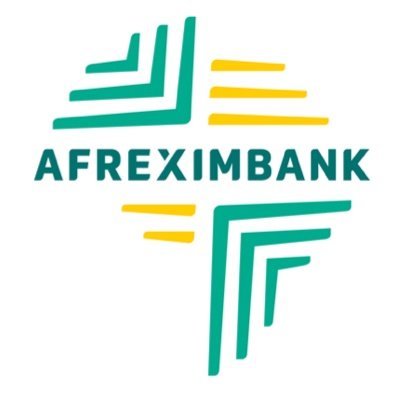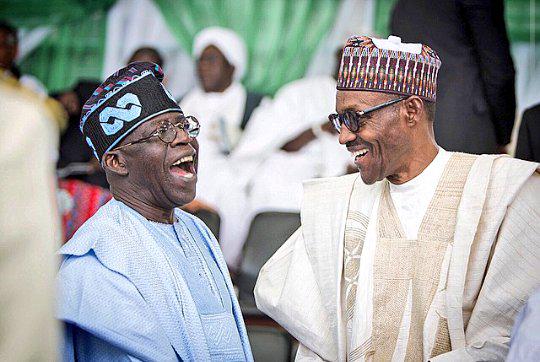The January 28 militia attack that killed three U.S. soldiers in Jordan fits the recent pattern of Iran and its proxies being more openly assertive. To understand Tehran’s calculus, one need only apply the old adage “all politics is local.” Put simply, Iranian leaders have good reason to believe that their aggressive domestic and regional approach has strengthened their hold on power at home—though they also know that the regime remains vulnerable and may therefore double down on the strategy of showing strength.
A Sanctions-Proof Economy?
U.S. officials have long believed that pressuring Tehran through sanctions would produce economic pain and, in turn, Iranian concessions. Instead, however, the country’s economy is doing well enough to leave the regime feeling quite secure on that front.
According to IMF projections, 2024 will be the third year in a row where Iran’s GDP grows faster than that of the United States, and this trend is expected to continue in 2025. Cumulative Iranian national income is forecast to grow 12.1% for the period 2022-24, compared to 6.1% for the United States. Iran’s performance is all the more impressive when one realizes that Europe and Japan’s economies have grown more slowly than America’s over this period—though to be fair, the benefits of this growth have accrued overwhelmingly to regime insiders, leaving ordinary Iranians grumbling.
Oil income is central to this success. In 2020, the U.S. Energy Information Administration estimated that Iran’s oil export revenues were $20 billion, with a crude production rate of around 2.0 million barrels per day and petroleum product consumption at 1.8 million b/d. Other production estimates at the time were even lower. Today, both oil prices and export volumes are up. The reliable Majlis Research Center estimates that the regime’s export revenues for the Iranian year 2024/25 will reach somewhere between $28 billion and $40 billion depending on price and volume. The government’s latest proposed budget split the difference by estimating annual oil revenues at $35 billion, based on exports of 1.35 million b/d.
The regime also benefits from the fact that Iran’s economy is less dependent on oil these days. In 1983/84, the IMF reported that oil constituted 98% of the country’s total exports. In 2022/23, however, Iran’s Customs Administration reported that non-oil exports had reached $53 billion, substantially more than oil sales. Admittedly, this figure is distorted because Iran, like the United States and the World Trade Organization, classifies its several billion dollars’ worth of condensate exports as non-oil exports even though they are essentially a type of oil. Yet even if one subtracts condensates, Iran’s non-oil exports alone would cover most of its $60 billion in total imports for 2022/23.
Government revenue has likewise become less dependent on oil. According to the proposed 2024/25 budget, Iran’s tax revenue now covers 46% of spending (though extensive off-budget spending by governmental and quasi-governmental institutions tends to cloud this picture; see below).
The labor situation has changed as well. Once upon a time, unemployment was the scourge of Iranian society, feeding political unrest. Yet from 2012 to 2022, the International Labour Organization (ILO) estimates that 150,000 additional men gained formal-sector jobs each year, more than 40% of them in a professional or managerial capacity. Tens of thousands more found informal ways to make a living. These numbers equal or exceed the growth in Iran’s male labor force, which is estimated at around 150,000 new working-age men per year—a drastic decrease from the rate of 600,000 seen a decade ago, when fewer people were reaching retirement age and many more young men were joining the labor force. In 2022, unemployment among men age 25-54 was reported at 6.9%—presumably not high enough to bring people onto the streets in protest.
Of course, Iranian women remain economically marginalized. As of 2022, Iran reported to the ILO that only 11% of its working-age women were employed, compared to 28% in Saudi Arabia—a potentially worrisome figure for the regime given that women spearheaded the most recent mass protest movement.
Inflation remains a daunting challenge as well, in part because the government does not limit its spending to what it collects from taxes and oil exports. Much of its spending, including off-budget spending, is financed by bank borrowing. The pace of money supply growth is so rapid that the IMF estimates consumer prices rose 46% in 2022/23 and will rise another 47% in 2023/24, before slowing down somewhat to “only” 32% in 2024/25 and 25% in 2025/26. In most societies, such rates would lead to massive discontent. But Iran has been under intense sanctions since 2018 and has become more or less accustomed to unusually high inflation, with the single-digit of President Hassan Rouhani’s first term now a distant memory. Of course, rising prices are still the source of much unhappiness, but there is little sense the economy is on the edge of collapse.
Overall, then, Iran’s leaders have reason to be relaxed about the country’s economic situation. They are therefore unlikely to offer concessions in the near term simply because the West increases its economic pressure.
Political Hold Secure, But a Troubled Future Awaits
After relaxing its rules on wearing the hijab due to the mass protests of 2022, the regime has been steadily reasserting its enforcement of the women’s religious garb. Its formula for responding to hijab protests is threefold: (1) vicious repression against some protesters, to make those who flout the rules worry they might be targeted next; (2) temporary toleration of relaxed rules in certain jurisdictions; (3) eventual reimposition of rules via fines, arrests, and new laws that penalize those who do not enforce the hijab regulations.
Although these tactics have stabilized the domestic situation somewhat, popular hostility toward the regime remains palpable. For example, Shervin Hajipour’s nationalist protest song “Trash” received thirty million views on its first day of release earlier this month, similar to the mass support shown for his 2022 protest anthem “Baraye.” Given the ongoing popular rejection of the Islamic Republic’s rigid ideology, further outbreaks of widespread protests would further undermine any claim the regime has to legitimacy.
The regime is also troubled by the looming challenge of identifying a successor to the eighty-four-year-old Supreme Leader Ali Khamenei, who has centralized decisionmaking in his own hands while creating no known transition mechanisms (though rumors persist that plans are being laid in secret). Technically, the Assembly of Experts is tasked with selecting a new leader, but the weakness of this clerical body is an invitation for powerful factions like the Islamic Revolutionary Guard Corps to dictate the choice. If Khamenei’s successor is simply a puppet to such factions, he would likely be too weak to rule, opening the door to chaotic competition both with and within the IRGC. The big question is whether this succession anxiety will preoccupy Iranian elites (which could limit the regime’s foreign adventures) or impel some factions to take bolder steps in the hope of advancing their standing.
Security Gains, But Failure to Protect Its Own
National security is the issue on which the regime has the most reason to be fearful. Its recent security successes are clear—Tehran has made substantial progress on keynote programs such as missile/drone development and nuclear enrichment, all despite foreign efforts to restrain it (e.g., Washington’s early 2023 informal deal seeking modest Iranian restraint in return for less economic pressure—a point of leverage that Tehran seems to care less and less about each year). The regime has also broken out of the decade-long “strategic loneliness” it experienced back when its only friends were Syria and Lebanon. This progress is partly due to the muscle of Hezbollah, Iraqi militias, and the Houthis in Yemen, all of whom Tehran arms and funds. The Gaza war has likewise gained more adherents for Iran’s view that the United States and Israel are the real culprits behind the region’s problems. And by providing Russia with badly needed military equipment, Tehran now has a permanent Security Council member to watch its back.
Yet for all its bravado about the successes of its “resistance” strategy, the regime has been unable to safeguard many of its most ardent supporters and top officials. Earlier this month, terrorist bombings in Kerman killed eighty-four people during events commemorating the late regime hero Qasem Soleimani. The severity of the incident and choice of target deeply shocked the public, while reports that Washington warned Tehran about the plot in advance have fed conspiratorial rumors. Meanwhile, authorities look helpless in the face of continuing Israeli attacks against senior officials, from the 2020 assassination of top nuclear scientist Mohsen Fakhrizadeh in the heart of Iran to the seemingly easy targeting of five senior IRGC-Qods Force officers in their Damascus home just last week.
How Far Will the Regime Go?
Tehran and its partners tend to be bold whenever they sense opportunity or fear that they appear weak. In Yemen, the Houthis are delighted at the publicity they are garnering for attacks on Red Sea shipping and have not curtailed their campaign despite U.S. and British airstrikes. In Iraq, militias are celebrating as their attacks fuel reports that Washington may reduce its local troop presence (though the full U.S. response to their latest major escalation remains to be seen).
Yet the “axis of resistance” is often cautious when facing real resistance. Most recently, after Pakistan responded in kind to Iranian missile strikes earlier this month, Tehran quickly assured Islamabad of its friendship and dispatched its foreign minister for a high-profile visit—an indication that hitting back at Iran directly does not necessarily lead to a cycle of more violence. Similarly, Tehran’s top proxy, Hezbollah, has pushed the envelope of how much it can attack Israel without using its most potent missiles, signaling a desire to avoid all-out war (for now) amid Jerusalem’s heavy military response.
Perhaps the most important lesson of the October 7 Hamas attack on Israel is that Washington and its partners do not know as much as they thought about what Iran and its partners are doing—indeed, Tehran’s plans may be much bolder and more dangerous than anyone thought. The greatest worry is how far the regime might be willing to go with its nuclear program, which has made disturbing progress and become much more opaque without facing consequences. Some Iranian figures may believe the time is ripe for a bold nuclear step—after all, the world is preoccupied with wars in Gaza and Ukraine, Washington is focused on its upcoming presidential election, Russia is seemingly more protective of Iranian actions, and Khamenei may want to leave a legacy of successful “resistance.” Prudence dictates that the United States and its allies prepare for the worst-case scenario of Iranian nuclear breakout, especially since economic sanctions are unlikely to impress the regime amid relative economic success.
By Patrick Clawson
Patrick Clawson is the Morningstar Senior Fellow at The Washington Institute and director of its Viterbi Program on Iran and U.S. Policy.





